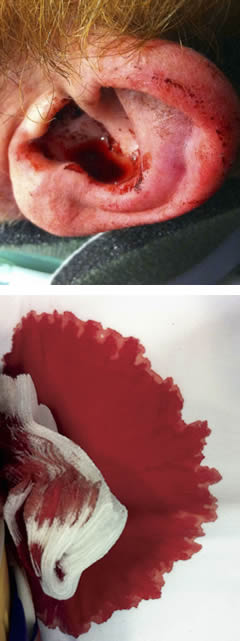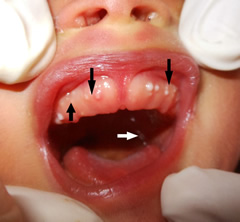(BMJ) - A 30-yo cyclist skidded on a wet road and struck his head on a curb. He was alert and oriented with normal vital signs. Blood was noted originating from the left external auditory meatus, leaving a halo on the sheet. What is the diagnosis?

|
Ruptured tympanic membrane
|
|
Hemorrhagic mastoiditis
|
|
Maxillary sinus fluid leak
|
|
Basilar skull fracture
|
|
Ear foreign body
|
(BMJ) - A 2.7-kg boy was delivered as breech vaginal birth after uncomplicated pregnancy. The infant was well w/ normal exam except for multiple white nodules along alveolar ridge of maxilla that did not interfere with nursing. What are they?

|
Epstein pearls
|
|
Primordial cysts
|
|
Mucoceles
|
|
Bohn nodules
|
|
Natal teeth
|
A 79-yo woman with PMHx of Wegener’s granulomatosis presented with hyperpigmentation of arms, face, and legs. Medication: methotrexate. Adrenal function and ACTH level normal. What is the diagnosis?

|
Methotrexate-associated hyperpigmentation
|
|
Addison disease
|
|
Cushing disease
|
|
Solar lentigo
|
|
Acanthosis nigricans
|
